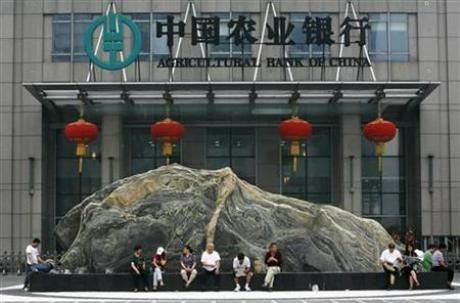Why are Chinese banks going public now?

Chinese banks are going public.
The big national banks like Bank of China, China Construction Bank, Industrial and Commercial Bank of China, and recently the Agricultural Bank of China have raised tens of billions of dollars through their initial public offerings (IPO).
Now, regional banks are following the trend. The Chongqing Rural Commercial Bank just raised about $1.5 billion through a Hong Kong IPO. Other regional banks like Bank of Shanghai and Bank of Hangzhou are likely to follow suit, according to a Reuters report.
Why are these banks raising money, and are they good investments?
Banks raise money for IPOs for a variety of reasons. Like non-financial firms, IPOs can make its owners very rich or provide the capital needed for expansion and new projects. However, banks may also try to use IPOs to recapitalize, or essentially plug up the losses on bad loans and assets with newly-raised money.
For Chinese banks raising money through IPOs recently, it isn't clear which category they fall under.
Most investors are familiar with China's growth story, and banks can certainly be a part of that scenario. Furthermore, China is pushing to advance their under-developed capital markets and financial sector, which most experts agree are small (relative to its economy) compared to Western norms.
However, China -- a strange mix of free market and government control -- isn't exactly transparent about its economy and its banks could be sitting on huge losses.
First, Chinese banks -- under the direction of the government -- went on a lending binge in 2009 in response to the global financial crisis. It is possible that many of these hastily-made loans were not prudently selected and will become non-performing in the future.
Actually, some analysts say that lending decisions in Chinese banks are influenced by political pressures instead of being evaluated on the probability of repayment. If this is true, the quality of their loan assets may be poor.
Moreover, a report from PNC Bank said Chinese banks often make loans to finance the projects of local governments through local government financing platform (LGFPs).
According to circumstantial evidence, it seems possible that many [of these] projects cannot service their debt, stated the report.
PNC said LGFP debt consists of 17 percent of total bank loans and 22 percent of the GDP.
However, Victor Shih, a Northwestern University professor, estimated LGFP loans to be roughly one-third of China's 2009 GDP.
If Chinese banks are indeed unhealthy, they may need government bailouts in the future. This possibility has been raised by Shih and Shen Minggao, Citigroup's chief economist for Greater China.
Fortunately, contrary to peripheral Europe, the Chinese government's balance sheet is relatively healthy, so it is quite capable of surviving even a widespread banking crisis.
However, the problem for equity investors in Chinese banks is that their shares probably won't perform well. In a worst-case scenario, these banks would be re-nationalized, which would wipe out private shareholders.
Email Hao Li at hao.li@ibtimes.com
© Copyright IBTimes 2024. All rights reserved.





















